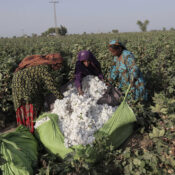
The Urgent Need to Address the Water Crisis in Pakistan
Introduction:
Pakistan, a country with a rapidly growing population, limited water resources, and the impact of climate change, is facing an alarming water crisis. This crisis has reached a critical level, threatening the livelihoods, health, and economic stability of millions of people across the country. It is imperative to shed light on the urgency of addressing this crisis, as well as explore its causes, consequences, and propose potential solutions to ensure a sustainable water future for Pakistan.
Causes of the Water Crisis:
The water crisis in Pakistan can be attributed to several interconnected factors. Firstly, inefficient water management practices and the lack of effective allocation and distribution of water resources play a significant role in exacerbating the issue. Leakage in pipes, outdated irrigation techniques, and inadequate infrastructure result in water wastage and unequal access to water.
Secondly, climate change has intensified the water scarcity problem in Pakistan. The country’s reliance on monsoon rains makes it vulnerable to erratic rainfall patterns, droughts, and the melting of glaciers in the Himalayas. As a result, water availability has decreased significantly, further straining an already burdened system.
Thirdly, the rapid population growth in Pakistan adds immense pressure to an already strained water supply. It is projected that Pakistan’s population will reach 403 million by 2050, leading to an exponential increase in water demand. The current water supply is unable to meet this growing demand, resulting in severe shortages and competition among different sectors.
Consequences of the Water Crisis:
The water crisis in Pakistan has far-reaching consequences that affect various aspects of society. Firstly, the agricultural sector, which is crucial to the country’s economy, is greatly impacted. Water shortages have led to decreased crop yields, reduced incomes for farmers, and increased poverty. This not only threatens the livelihoods of millions but also poses a significant risk to food security.
Secondly, the scarcity of safe drinking water and poor sanitation practices contribute to widespread waterborne diseases such as diarrhea, cholera, and hepatitis. The most vulnerable populations, including children, are disproportionately affected by these diseases, leading to increased morbidity and mortality rates. Additionally, inadequate water supply for proper hygiene and sanitation further aggravates the health crisis in Pakistan.
Thirdly, the water crisis poses economic challenges for the country. Industrial production, energy generation, and overall economic growth are adversely affected. The limited water supply disrupts manufacturing processes, resulting in decreased productivity and increased costs. The energy sector, heavily reliant on water for hydropower, suffers from reduced electricity generation, leading to higher reliance on expensive alternatives.

Solutions to the Water Crisis:
Addressing the water crisis in Pakistan requires a multi-faceted approach and collaborative efforts from various stakeholders. Here are some potential solutions to consider:
- Improved Water Management: Efforts should be made to enhance water management practices. This includes investing in water infrastructure, addressing leaks and losses in the distribution network, and adopting efficient irrigation techniques such as drip irrigation. Additionally, implementing effective water pricing mechanisms can incentivize conservation and ensure equitable access to water.
- Conservation and Reuse: Promoting water conservation practices at the individual, agricultural, and industrial levels is crucial. Educating the public about water-saving techniques, encouraging rainwater harvesting, and facilitating wastewater treatment for reuse in agriculture or industrial processes can significantly reduce water demand.
- Climate Change Adaptation: Given the adverse impacts of climate change on water availability, implementing strategies for climate change adaptation is essential. This involves investing in water storage infrastructure such as dams and reservoirs to capture and store rainfall. Furthermore, promoting afforestation and sustainable land management practices can help conserve water resources and mitigate the effects of climate change.
- Cross-Border Cooperation: As the Indus River originates in India and flows through Pakistan, managing shared river basins and promoting cooperation between countries is crucial for sustainable water management. This can be achieved through bilateral agreements for water sharing, joint river basin management, and transparent data sharing to ensure equitable distribution.

Conclusion:
The water crisis in Pakistan poses a significant threat to the well-being, economic stability, and future of the nation. Urgent action is required from the government, civil society, and individuals to address this crisis effectively. By improving water management practices, promoting conservation and reuse, adapting to climate change, and fostering cross-border cooperation, Pakistan can pave the way towards water security and a sustainable future. Failure to address this crisis will result in dire consequences, impacting not only the present generation but also future generations who deserve a life free from the burden of water scarcity.
All Categories
- Agricultural Methods
- Agriculture and Women Small Farmers Rights Awareness
- Climate Change
- Disable and Human Rights
- Disable Jobs
- Donation
- Education
- Health Issues
- Organic Foods
- Organic Vegetables
- Orphans Children
- Plastic production and disposal
- Services
- Sinking in Scarcity
- Success Stories
- Uncategorized
- Waste Management
- Women Rights
- Youth Empowerment




